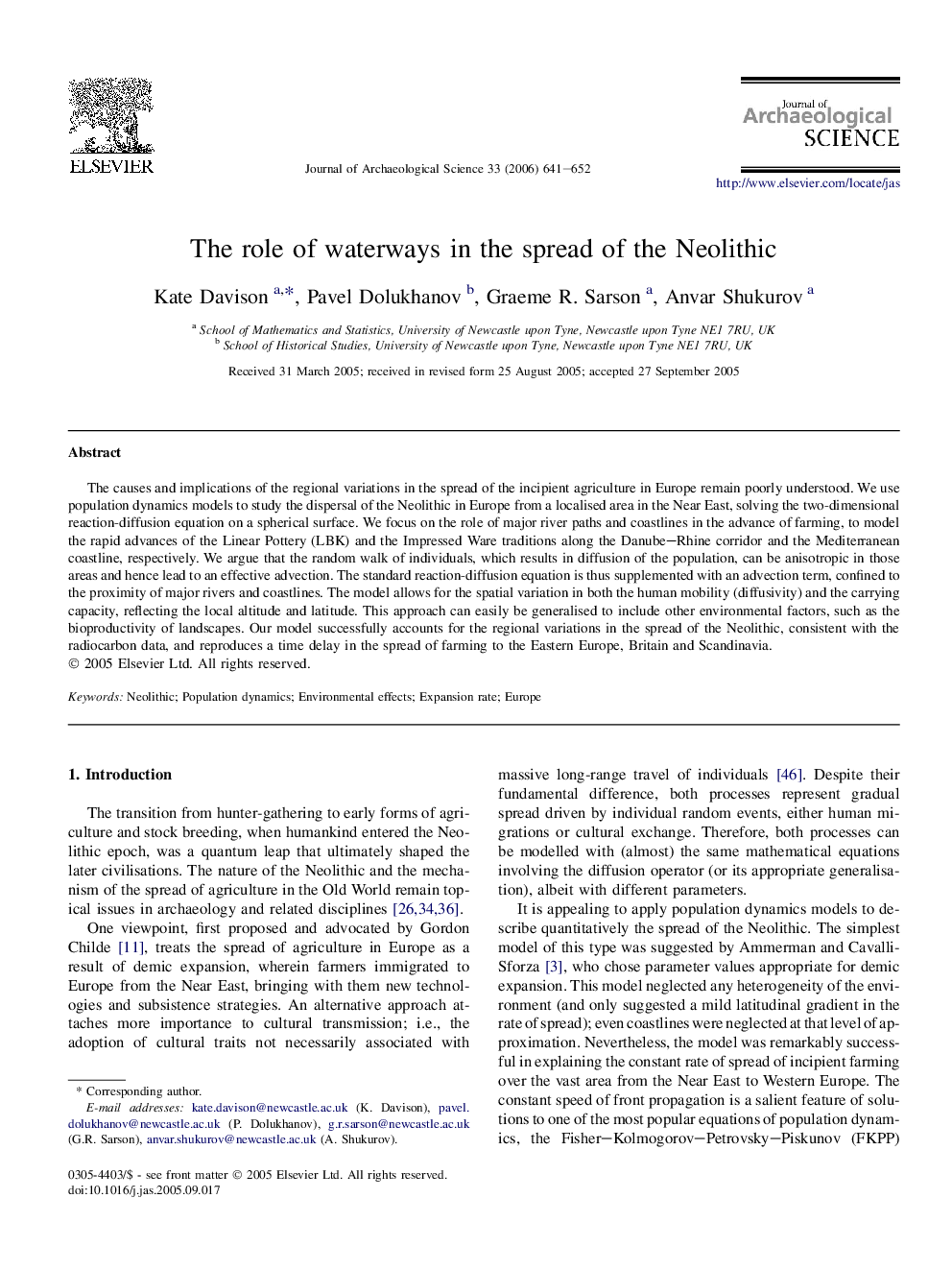| Article ID | Journal | Published Year | Pages | File Type |
|---|---|---|---|---|
| 1036688 | Journal of Archaeological Science | 2006 | 12 Pages |
The causes and implications of the regional variations in the spread of the incipient agriculture in Europe remain poorly understood. We use population dynamics models to study the dispersal of the Neolithic in Europe from a localised area in the Near East, solving the two-dimensional reaction-diffusion equation on a spherical surface. We focus on the role of major river paths and coastlines in the advance of farming, to model the rapid advances of the Linear Pottery (LBK) and the Impressed Ware traditions along the Danube–Rhine corridor and the Mediterranean coastline, respectively. We argue that the random walk of individuals, which results in diffusion of the population, can be anisotropic in those areas and hence lead to an effective advection. The standard reaction-diffusion equation is thus supplemented with an advection term, confined to the proximity of major rivers and coastlines. The model allows for the spatial variation in both the human mobility (diffusivity) and the carrying capacity, reflecting the local altitude and latitude. This approach can easily be generalised to include other environmental factors, such as the bioproductivity of landscapes. Our model successfully accounts for the regional variations in the spread of the Neolithic, consistent with the radiocarbon data, and reproduces a time delay in the spread of farming to the Eastern Europe, Britain and Scandinavia.
